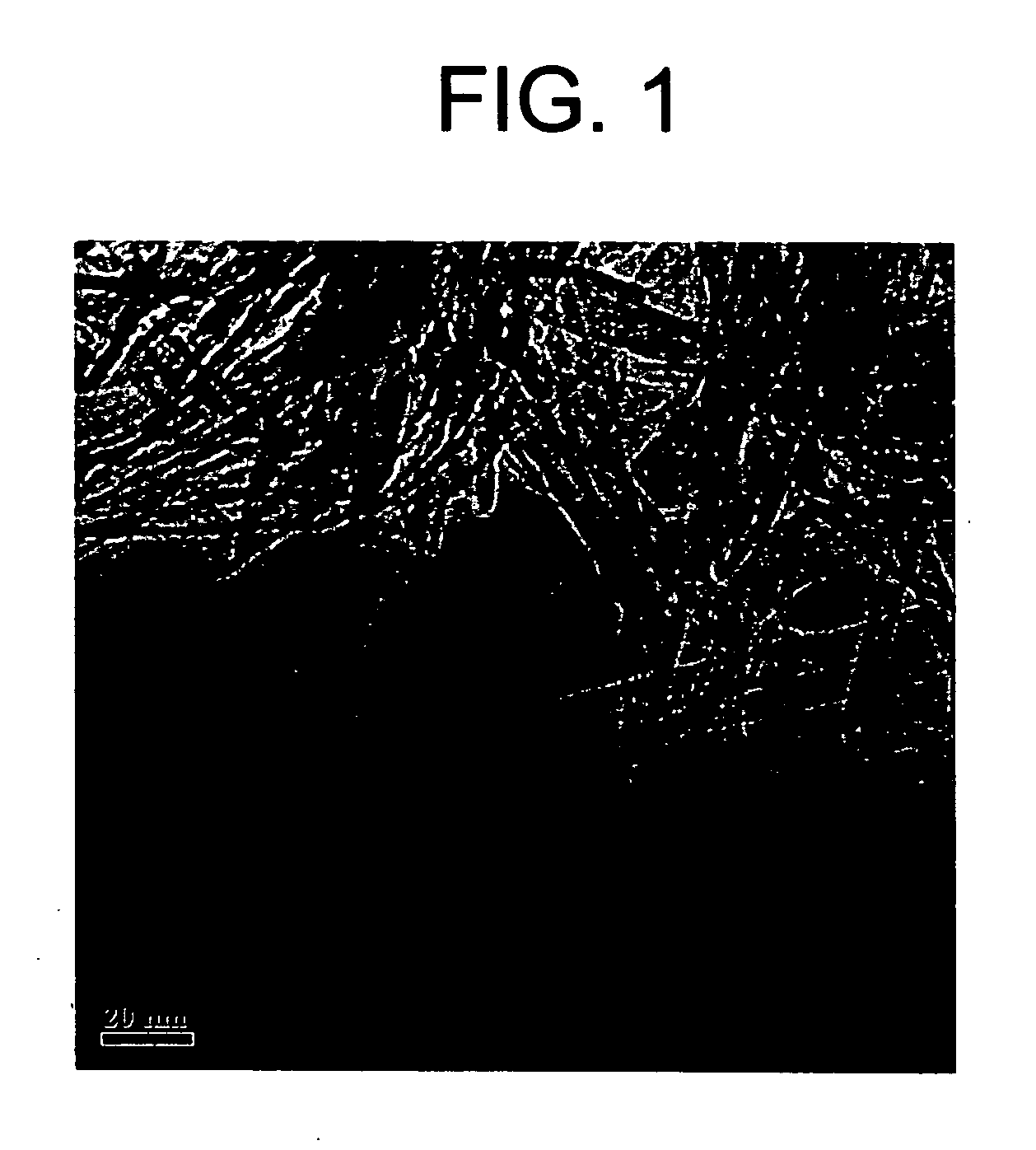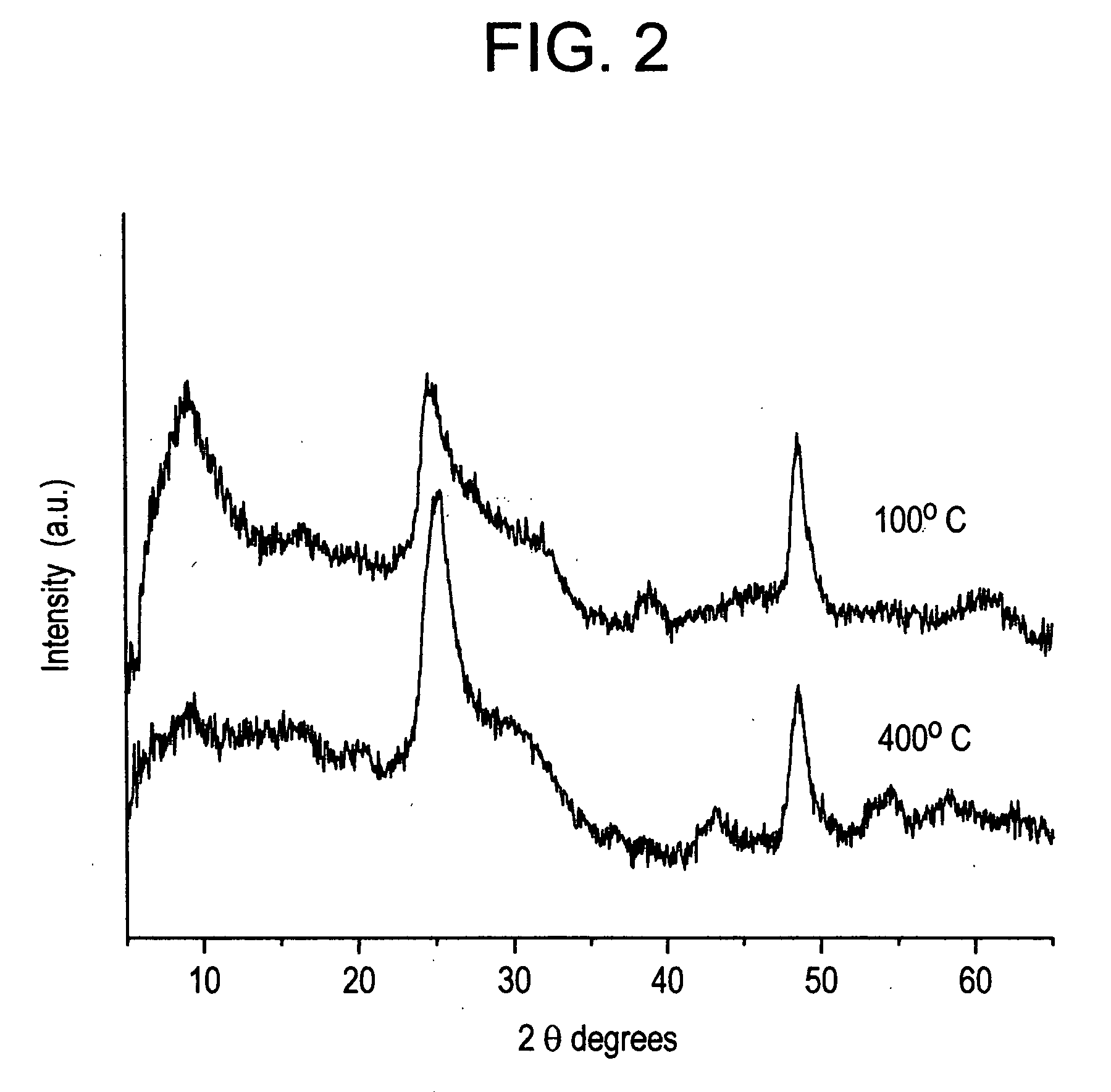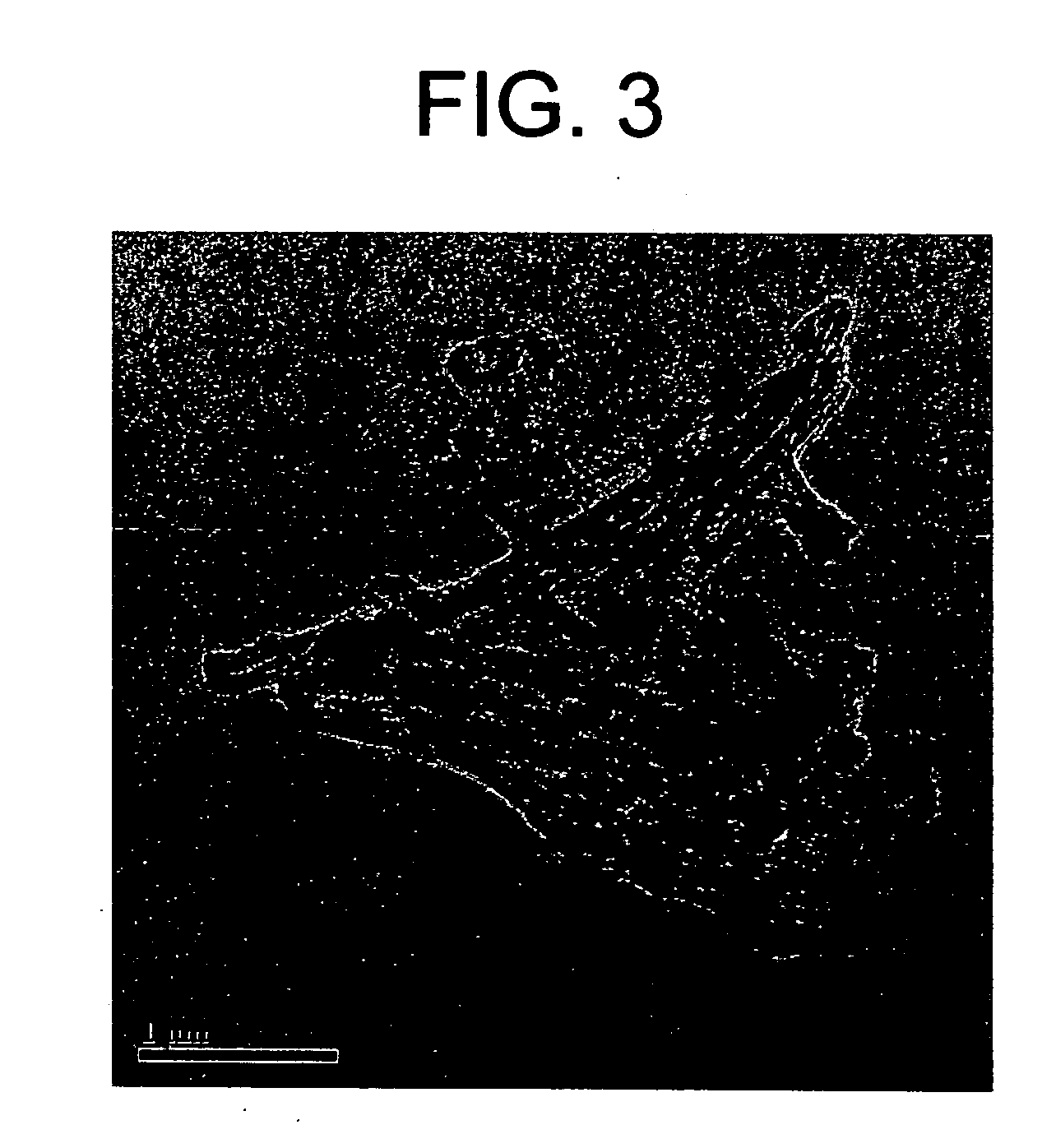Selective adsorbent material and its use
a selective adsorbent and material technology, applied in the field of selective adsorbent materials, can solve the problems of large equipment installation, limited adsorption capacity of these materials, and large quantity of them required
- Summary
- Abstract
- Description
- Claims
- Application Information
AI Technical Summary
Benefits of technology
Problems solved by technology
Method used
Image
Examples
examples
[0052] In the following text we present some examples related with the adsorbent materials and their adsorption capability to adsorb polar compounds of nitrogen and sulfur contained in different petroleum hydrocarbon fractions involved in the refinery of petroleum without limiting their applications.
[0053] In Table 1 it is presented the characterization of the different hydrocarbon fractions involved in the refinery of petroleum with different boiling temperatures and different content of polar compounds of nitrogen and sulfur, which were used to obtain the examples and the possible applications, objects of the present invention, without limiting their reach. The percentage of the removal of nitrogen or sulfur compounds was determined from the total initial content of the contaminant in question minus the content of the contaminant after the adsorption treatment divided by the total initial content of the contaminant, % R=(CNo−CN) / CNo), where CNo is the content of contaminant in th...
examples 1 to 3
[0054] These examples illustrate the preparation of a nanostructured material of hydrogen titanate and / or mixed sodium and hydrogen titanate with a nanotubular or nanofiber morphology.
[0055] For the Example 1, 45 grams of titanium oxide with anatase structure, commercially available, whose textural characteristics correspond to the reference material of the Example 12 in Table 2, is placed in contact with 3 L of an aqueous solution where previously 1200 grams of an alkaline metal hydroxide has been dissolved, preferably sodium hydroxide. The formed suspension is submitted to a thermal treatment at a temperature of 100° C., under autogeneus pressure in an autoclave during a period of time between 24 and 48 hours.
[0056] For Example 2, 150 grams of titanium oxide with anatase structure, commercially available, whose textural characteristics correspond to the reference material of the Example 11 in Table 2, is placed in contact with 3 L of an aqueous solution where previously 1200 g o...
examples 4 to 8
[0061] These examples present the incorporation of a transition metal on a nanostructured material through a procedure of ionic exchange.
[0062] In Example 4, 5 grams of the material with a nanotubular and / or nanofiber morphology, which was obtained in the Example 1, is placed in contact with a 50 ml of a 0.01 M solution of copper nitrate and the solution is heated at 60° C. for a period of time ranging from 1 to 5 hours, then the solution is cooled down at room temperature, filtered, and washed with abundant deionized water and dried at 110° C. in a stove.
[0063] In Example 5, 10 grams of the material with a nanotubular and / or nanofiber morphology, which was obtained in the Example 1, is placed in contact with a 100 ml of a 0.04 M aqueous solution of copper acetate and the solution is heated at 60° C. for a period of time ranging from 2 to 24 hours, preferably 18 hours. Then the solution is cooled down at room temperature, filtered, and washed with abundant deionized water and drie...
PUM
| Property | Measurement | Unit |
|---|---|---|
| pressure | aaaaa | aaaaa |
| pressure | aaaaa | aaaaa |
| temperature | aaaaa | aaaaa |
Abstract
Description
Claims
Application Information
 Login to View More
Login to View More - R&D
- Intellectual Property
- Life Sciences
- Materials
- Tech Scout
- Unparalleled Data Quality
- Higher Quality Content
- 60% Fewer Hallucinations
Browse by: Latest US Patents, China's latest patents, Technical Efficacy Thesaurus, Application Domain, Technology Topic, Popular Technical Reports.
© 2025 PatSnap. All rights reserved.Legal|Privacy policy|Modern Slavery Act Transparency Statement|Sitemap|About US| Contact US: help@patsnap.com



